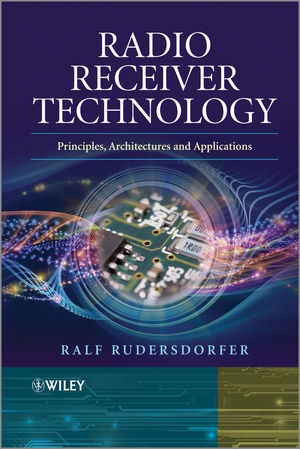Read more
Informationen zum Autor Ralf Rudersdorfer , born in 1979, began his career at the Institute for Applied Physics. He then changed to the Institute for Communications Engineering and RF-Systems (formerly Institute for Communications and Information Engineering) of the Johannes Kepler University Linz, Austria, to take over the laboratory area and technical agendas of the Institute. His activities included the setting up of a measuring station with attenuated reflection properties / antenna measuring lab and furnishing the electronic labs of the Mechatronics Department with new basic equipment. He began publishing technical papers at the age of 21. In August 2002 he became a Guest Consultant for laboratory equipment and RF hardware and conducted practical training courses in "Electronic Circuit Engineering" at the reactivated Institute for Electronics Engineering at the Friedrich Alexander University Erlangen-Nuremberg, Germany. In 2006 he applied for a patent covering the utilization of a specific antenna design for two widely deviating ranges of operating frequencies, which was granted within only 14 months without any prior objections. In the winter semesters 2008 to 2011 he gets the lectureship for the practical course "Applied Electrical Engineering" at the Johannes Kepler University Linz, Austria. Rudersdorfer is author of numerous practice-oriented publications in the fields of radio transmitters and radio receivers, high-frequency technology, and general electronics. Furthermore, he was responsible for the preparation of more than 55 measuring protocols regarding the comprehensive testing of transmitting and receiving equipment of various designs and radio standards issued and published by a trade magazine. During this project alone he defined more than 550 intercept points at receivers. He has repeatedly been invited to present papers at conferences and specialized trade fairs. At the same time he is active in counseling various organizations like external cooperation partners of the university institute, public authorities, companies, associations, and editorial offices on wireless telecommunication, radio technology, antenna technology, and electronic measuring systems. At the VHF Convention Weinheim, Germany, in 2003 he received the Young Talent Special Award in the radio technology section. At the short-wave/VHF/UHF conference conducted in 2006 at the Munich University of Applied Sciences, Germany, he took first place in the measuring technology section. The argumentation for the present work in its original version received the EEEfCOM Innovation Award 2011 as a special recognition of achievements in Electrical and Electronic Engineering for Communication. Klappentext Written by an expert in the field, this book covers the principles, architectures, applications, specifications and characterizations of radio receiversIn this book, the author introduces the reader to the basic principles and theories of present-day communications receiver technology. The first section of the book presents realization concepts at the system level, taking into consideration the various types of users. Details of the circuitry are described providing the reader with an understanding of fully digitized radio receivers, offering an insight into the state-of-the-art.The remaining sections address radio receivers, particularly as two-port devices. Furthermore, the author outlines the fields of applications (with sample calculations and with reference to practical work) and their features and considers also the specialty of high-quality radio receivers. As can be seen from the multitude of terrestrial applications described in Part II, they are typically used for radio surveillance, signal intelligence, modern radio bearing and at the classical radio services. Parts III and IV describe the entire range of parameters that are useful for the characterization of these receivers. The des...

